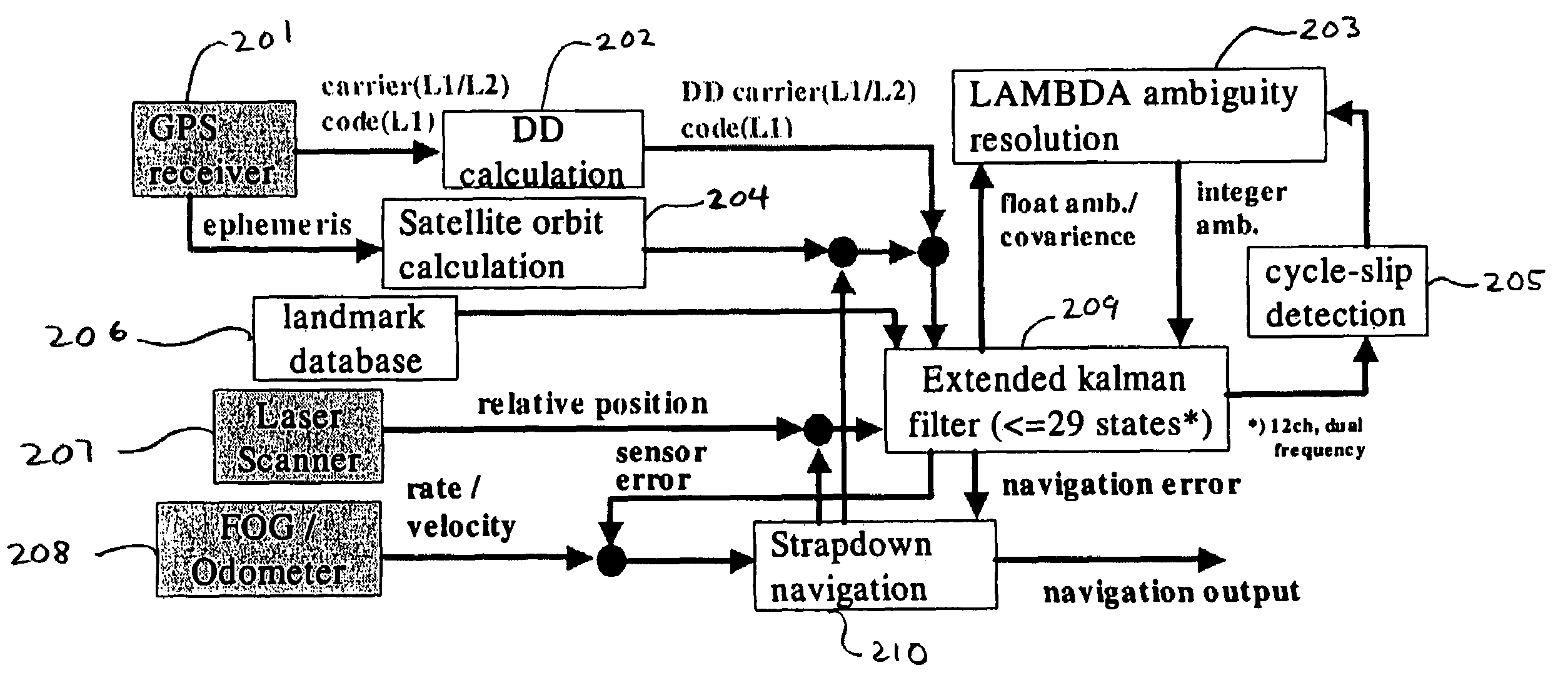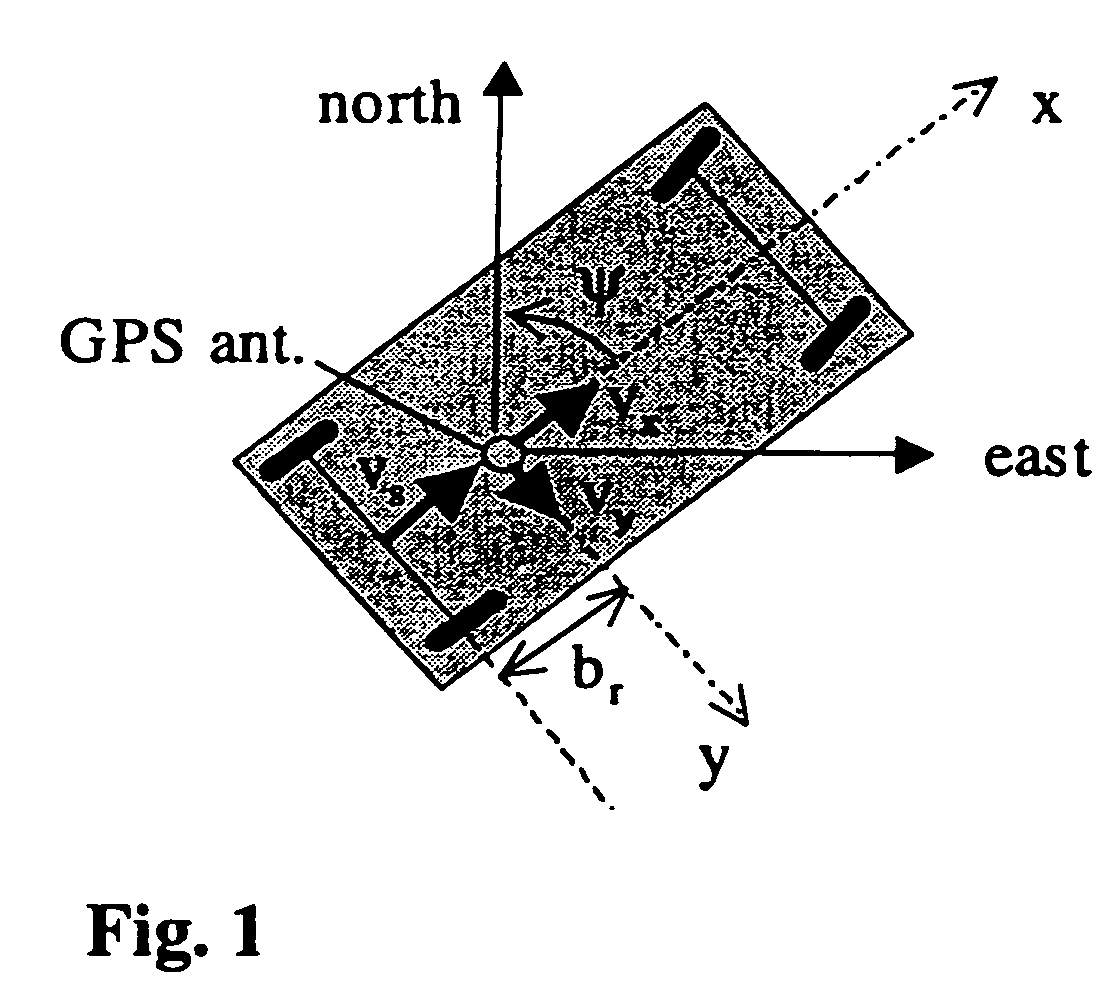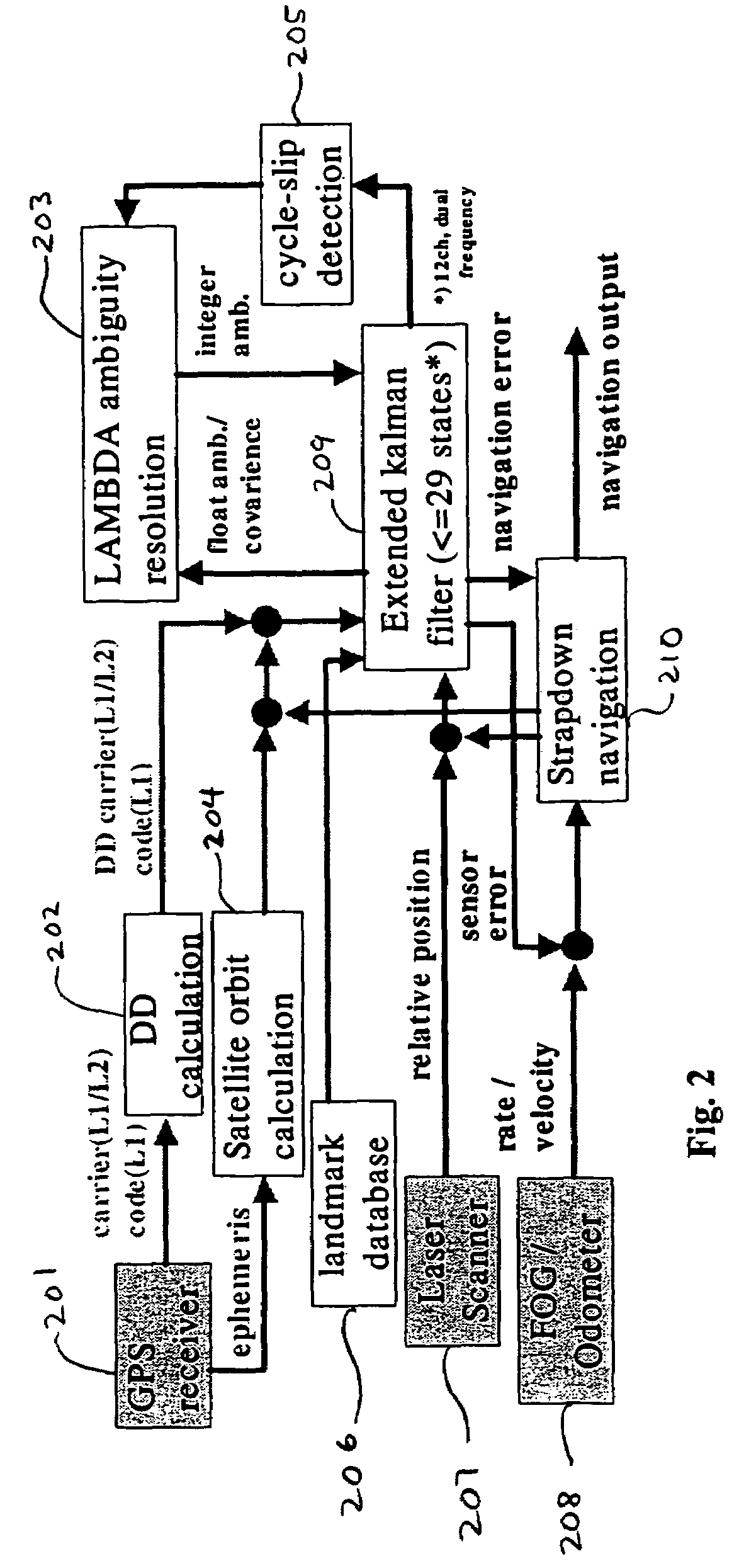System for autonomous vehicle navigation with carrier phase DGPS and laser-scanner augmentation
a technology of laser scanning and autonomous vehicle, applied in the field of navigation systems, can solve problems such as performance degradation
- Summary
- Abstract
- Description
- Claims
- Application Information
AI Technical Summary
Benefits of technology
Problems solved by technology
Method used
Image
Examples
Embodiment Construction
[0041]The navigation system consists of horizontal strapdown navigation calculation and the extended Kalman filter (EKF). FIG. 1 shows a horizontal dynamics model of the vehicle. The strapdown calculation in a local horizontal frame is performed by position and heading (yaw angle) updates using rate gyro, e.g., a low-cost Fiber Optic Gyro (FOG), and the odometer input compensated by the EKF. A Micro Electro Mechanical Systems (MEMS) gyro and a vibrating gyro may also be used. The position of the vehicle is defined as the phase center of a GPS antenna, and the position dynamics in local NED (North-East-Down) frame is defined as follows,
[0042][N.E.]=R(ψ)[vxvy];D.=0(1)R(ψ)=[cosψ-sinψsinψcosψ](2)
where vx and vy are the body-frame velocity defined as follows,
[0043][vxvy]=[Vsbrrs].(3)
Vs and rs are the compensated velocity measured by the odometer and the yaw rate measured by FOG, respectively. br is the horizontal distance between the rear wheel axis and the GPS antenna phas...
PUM
 Login to View More
Login to View More Abstract
Description
Claims
Application Information
 Login to View More
Login to View More - R&D
- Intellectual Property
- Life Sciences
- Materials
- Tech Scout
- Unparalleled Data Quality
- Higher Quality Content
- 60% Fewer Hallucinations
Browse by: Latest US Patents, China's latest patents, Technical Efficacy Thesaurus, Application Domain, Technology Topic, Popular Technical Reports.
© 2025 PatSnap. All rights reserved.Legal|Privacy policy|Modern Slavery Act Transparency Statement|Sitemap|About US| Contact US: help@patsnap.com



